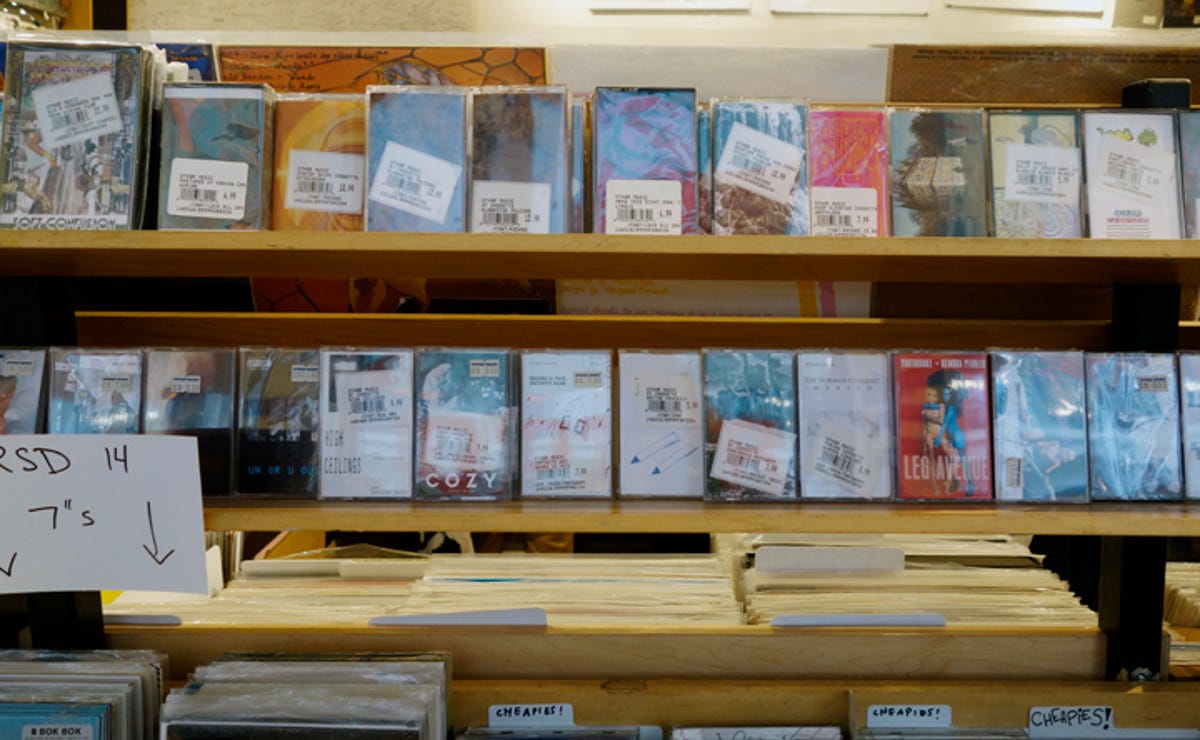
Steve Guttenberg/CNET
Last month, I asked my readers to submit essays for my ” You can be the Audiophiliac for a day” contest. I received a lot of thought-provoking pieces, and I’d like to thank everyone who took the time to write. You guys are a smart bunch, but there can be only one winner, and I selected David H.’s “Skin, Grass, and Sky; Or How I Learned to Stop Worrying and Love My Cassette Deck.”— Steve Guttenberg
Skin, Grass, and Sky; Or How I Learned to Stop Worrying and Love My Cassette Deck
The first time I played a cassette on my new cassette deck, I felt sick. Literally.
It was a Pete Seeger tape I’d picked up from my local record store about a year ago. I grabbed it because I was nostalgic, so nostalgic I completely forgot that I had no means of playing it. My last tape deck got totaled in 2003 (along with the Ford Taurus it was in). I got by on CDs and MP3s for the next five years, and in 2008 bought my first turntable and real hi-fi.
Since then, I’ve been tweaking my system to get maximize realism and dynamics while minimizing distortion. I like music to sound as “real” as possible. When I play a Pete Seeger LP on my Rega P3 turntable, through a Pioneer Elite receiver and Monitor Audio tower speakers, it sounds pretty good…like Pete’s playing the banjo in my living room.
So when I hooked up my new Realistic SCT-86 tape deck and popped that Pete Seeger tape in, my heart did more than sink. I actually got sick to my stomach. The sound was rubbery and flaccid compared to my LPs and even my MP3s. There wasn’t a hint of realism; I was disoriented. I felt — and I’m not exaggerating — queasy.
Now, during my stay at USC film school, I had the marvelous fortune of having Tomlinson Holman as a teacher (THX stands for “Tom Holman eXperiment”). In making a point about sound design, Tom mentioned an old adage in color correction — skin, grass, and sky — get those right and you’ve done 90 percent of the work. In other words, the audience only really “knows” those three “colors,” so if an actor’s shirt appears greener or redder than it was on set, the audience is none the wiser.
The very same thing is true for the reproduction of sound and music. I know what an acoustic guitar sounds like, and a banjo, and a voice. So when my cassette distorted the sound of Pete Seeger, my brain knew something was wrong.
But when it comes to drum machines and synthesizers, we have no point of reference. Because of this, in the realm of synthetic sounds there is freedom from fidelity. With that in mind, I gave my tape deck a second chance.
I popped out Pete Seeger and popped in “Forrest Mirrors” by Spvce Gvng. The music is described as “experimental hip hop beats + ambient bedroom music.” It was an impulse buy, $5 at the record store. The cassette run was limited to 100, so I bought something that’s relatively rare and potentially collectible.
All of a sudden, I got it. I understood the “tape resurgence.” Spvce Gvng is all-electronic. There are samples, sure, but they’ve been heavily EQ’d. There is no acoustic reproduction, only synthetic. Nothing on “Forest Mirrors” sounds real because it’s not supposed to. When I listen on my cassette deck, it sounds exactly the way Spvce Gvng wanted it.
I’ve since bought a lot more tapes. Sima Kim, Draveng, D/P/I, Lisa Papineau. Like Spvce Gvng, these releases are mostly “synthetic,” or at least proudly lo-fi. These tape-only releases are quick and dirty, but unpretentious and pure. There’s no audiophile 180-gram blah blah, just unadulterated music.
I don’t listen to cassettes every day, but when I do, I don’t expect the same resolution and detail as when I drop a needle on an LP. I get something cooler, more relaxed. Cassettes aren’t about accuracy, they’re about keeping it cheap and casual.
And for that, they sound just fine.




